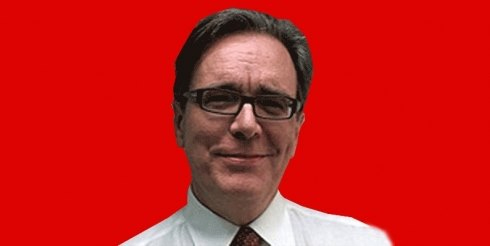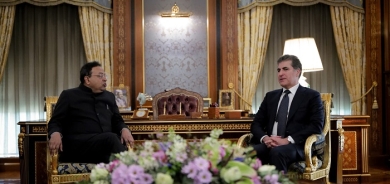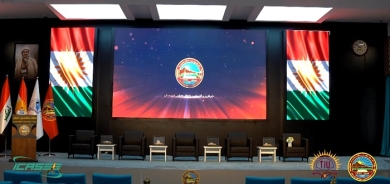Kurdistan Genocide and Rebirth: The destruction of Kurdistan and its rebuilding

Halabja:
The events of Halabja have probably received more attention than the rest of the atrocities committed against the Kurds by Saddam’s forces put together. There are understandable reasons for this, as we will discuss below, but sometimes the focus can obscure events that claimed far more lives. Nevertheless, it is important to understand Halabja, because it serves as a symbol of Saddam’s approach to my people, because it allows us to explore the tactics of propaganda used by the regime around its atrocities, and because, even though there were other equally important moments of violence, the bombing of Halabja did claim some 3000-5000 lives.
Why has there been a focus on it? Why have previous books made it their central element, as Hiltermann does , rather than just one incident in a sustained campaign against my people? Part of the answer undoubtedly lies in the stated presence of weapons of mass destruction as a justification for the Western invasion of Iraq. In ostensibly examining Halabja, writers such Hiltermann actually examine a much broader range of questions relating to chemical weapons and international attitudes to them. There is nothing wrong with that, but it does move the emphasis away from my people, and so creates a book with very different aims to this one.
Another part may come down to simple self-interest. For many outsiders, the genocide of the Kurds is simply something that happened a long way away. It does not affect them, or if it does, it does so only in a general way. The use of chemical weapons against civilian targets, however, is an issue that has the potential to affect anyone, anywhere. So is potential complicity in shifting the blame for the events, which is the issue that Hiltermann focuses on.
For some writers, Halabja may also have been chosen because the full scope of the suffering of my people under Saddam is difficult to take in, and that is more understandable. Sometimes, people need a symbol because they cannot cope with the full reality of something, and Halabja certainly works as that. The danger comes when the symbol starts to be seen as the whole reality, and 3000-5000 deaths start to be taken as a substitute for 182 000. In too many books, the Anfal and all the previous attacks on my people are given just a chapter or so as background to this one massacre, when really it should be the other way around.
So I have tried to avoid focussing too much on the events of Halabja elsewhere in this book. The regime’s efforts at genocide did not start or end there. Their hatred of the Kurds did not find its expression solely in that city, and their tactics were not defined solely by those they used there. Indeed, in the last chapter, I suggested that their most effective tactics against my people came when they sought to use chemical attacks only in conjunction with other methods. That is a theme I will explore more here.
Nevertheless, Halabja does warrant at least some serious attention. It represented one of the earliest attacks in the Anfal campaign, coming on the 16th of March 1988, and so helps to show the point where Saddam’s troops moved to the outright slaughter of my people (though remember that the preparatory phase of the Anfal had already killed or displaced many). It remains the highest number of casualties due to chemical weapons use anywhere, and a major breach of international conventions. It is one of the few times in the Anfal that the regime attacked a city directly. It also demonstrates a lot about the propaganda machine of the Iraqi government of the time, and about the willingness of Saddam’s international friends to aid him. All of those are important issues.
Let’s start with the background to what happened. We already know from the previous chapter that under Ali Hassan Al-Majid there must have been plans put in place to attack the Kurds over the period from 1987. It seems likely, therefore, that the regime was simply looking for an appropriate opportunity to put them into action. At the start of March 1988, that excuse came along. At what was the height of the Iran-Iraq war, in response to Iraqi missile attacks, the Iranian military moved into the north of Iraq, with aid from peshmerga. At some point prior to the 16th of March, they succeeded in moving into the city of Halabja, though there is little evidence that they stayed there.
The brief facts of what happened next are as follows. On the 16th of March, the Iraqi military bombed the city with chemical weapons dropped from planes. It preceded the bombing with scouting from helicopters, both to reconnoitre the area and to check wind direction. The overwhelming majority of fatalities and casualties resulting from that attack came in the form of civilians, not Iranian troops or peshmerga. The numbers of dead are estimated at between three and five thousand, while anywhere up to ten thousand may have been injured, though both of these figures are difficult to prove with any certainty.
Put like that, it sounds so simple, yet there are many questions that need to be asked about the events of that day, about its aftermath, and about its place within the regime’s campaign of destruction as a whole. Let’s start with some of the key details of the attack, the regime’s actions, and the civilian responses to it.
First, let’s be clear about one thing: this was a deliberate attack on a civilian target, aimed at killing as many Kurds as possible. That can be seen both in the targeting of the city, when any peshmerga were outside it, and in the choice of weapons. Why use chemical weapons in a city if the intention were to attack military forces? Just as importantly, any Iranian forces left in the city would have been more than capable of dealing with a chemical attack, so it was really only civilians at risk. Combine that with the use of chemical weapons against civilian targets throughout the rest of the Anfal, and it is easy to see that this was not a military attack with civilian collateral damage, this was an attack always intended to kill at least as many civilians as peshmerga or Iranian troops.
That is important, because there have been writers who have treated Halabja as something separate from the Anfal that it sat within. It has occasionally been treated as a legitimate military offensive using illegitimate means (chemical weapons) rather than as a part of a more general genocide against the Kurds.
This, I feel, is both not an accurate reflection of the attack on Halabja, and a misunderstanding of the nature of the Anfal as a whole. The Anfal was a genocide that killed tens of thousands of civilians, yet the regime always claimed it was acting against rebels, dissidents and peshmerga. There was, throughout, a confusion of the military and the civil, a targeting of civilians while claiming military aims. That fits with Halabja, even if some aspects, such as the targeting of a city rather than a rural area, seem anomalous. Trying to split an attack off from the Anfal because of potential military targets in the area simply does not work.
That the Iraqi military knew that they would be primarily targeting civilians is hard to doubt. For one thing, Halabja was a city, not easily evacuated and certainly not likely to be free from civilian targets. For another, there are the reports of helicopters scouting the area, so the military commanders ordering the attack would have been aware throughout, not just that there was a risk of civilian casualties, but the precise extent of the civilian presence in the city. They would also have known that any military targets were outside the city, not within it.
The chemical weapons used seem to have been dropped from Iraqi MIGs. This is a tactic used in some phases of the Anfal but not in others, when artillery was used to deliver the weapons instead. Is this difference a meaningful one? Was it dictated by the nature of the target, or by other considerations? My guess is that the urban target probably played a role in the choice of delivery method, since an airborne attack may have been simply easier in such circumstances. Yet there may also have been other factors at play.
Consider those occasions when we know that artillery mounted chemical weapons were used during the Anfal. In general, they were used as part of other tactics, driving people towards ground forces as they fled. The use of aircraft in Halabja suggests a more isolated attack, and certainly there seems to have been no attempt at the kind of secondary ground operation used elsewhere. That combination suggests the use of chemical weapons to kill as many people as possible directly. It also suggests, again, that there was no focus on defeating another military force.
We know from accounts from the city that the initial reaction to the attacks was one of surprise. People huddled in cellars, basements and bomb shelters, believing that the city was about to be shelled or bombarded with conventional weapons. It is a sad reflection on the frequency with which my people have been caught up in the middle of other people’s wars that the inhabitants of the city were so ready for that kind of conventional attack.
They were not prepared for bombs that did not explode, and we have many accounts of people not believing that something else was happening until it was too late. Survivors consistently say that there was the smell of sulphur, but most only linked that to the idea of chemical weapons once they or people around them began to display symptoms.
Those symptoms included a wide range of complaints, including blackening of the skin, eye irritation, confusion, lack of coordination, inability to breathe and more. They are not fully explained by a single poison, suggesting that a combination of different chemical weapons was used in the attack. Commentators have suggested that the combination may have included elements such as mustard gas and cyanide, among others.
Whatever the combination was, it was heavier than air. That meant that those civilians who had taken shelter from potential shelling were the ones most at risk in the attack. They stayed there because they believed they would be safe, and there are stories of people trying to keep their families there to protect them, not understanding the full extent of the danger. The ones who stayed in their shelters died.
So did many of those who attempted to escape. People made for the river, thinking that it would disperse the gas, or simply attempted to escape Halabja any other way they could. Many did not make it. There are stories of people becoming separated from their families and quickly being lost. Since confusion was one of the symptoms of the gas, that contributed to the number of those breaking away from safety or going in the wrong direction. It is hard to see how any of those doing so could have survived.
I have said before that it is hard to know precisely how many people died, and even harder to know how many were injured in the attack. We don’t know, for example, how many people have died from longer term effects brought on by exposure to the gas, and mustard gas is notorious for its long term effects. Nor, in a region where so many people have been shifted away from their homes and so many more were killed later in the Anfal, can we simply take the number of people missing from around the area as an indication of those killed in the attack.
So there are serious limitations when it comes to judging the extent of the casualties from the attacks, but there are also some sources of information, such as medical reports and accounts from immediately afterwards. The consensus as I stated at the start of the chapter, seems to be that at least three thousand people were killed in Halabja, and possibly as many as five thousand. Up to twice that number may have been injured as a result of coming into contact with toxic chemicals.
I have briefly explored the kinds of injuries that were inflicted by the attack above, but two points go on to add to their seriousness. The first is the lack of immediate medical attention for most of the inhabitants. There are stories of people who were able to secure shots of atropine from the local medical centre, or who were able to get medical attention from those peshmerga close to the city. In both cases though, getting help meant being able to travel to it, and many of the worst affected simply couldn’t do so.
Even where they could get some medical attention, it must often have been basic. We are limited in what we can know here, because most of the stories that come to us of the injured are from those who were able to get to more complete medical facilities, but we know from those stories that often, measures such as intubation or tracheotomies were necessary to assist breathing, sometimes accompanied by the debridement of dead tissue or the use of significant amounts of fluids to stabilise the injured.
I can, therefore, only imagine what things must have been like for those injured but unable to get to immediate medical help. How many must have died trying to escape over the border into Iran, or deep into the mountains? How many people must have realised the severity of their symptoms too late? Even from survivors, we hear stories of other people trapped with them, who were weaker, or who simply got a larger dose of the gas. Often, even in stories from those shelters where people were able to escape, those stories start with individuals who started to exhibit symptoms in the minutes after the attack, as the “wrong” smell started to seep in, and who died before anyone could help them.
A second point, and one of the cruellest elements of the attack on Halabja, was that often, it was the very young or the very old who succumbed. Where previous atrocities such as the mass murder of 1983 at least made a pretence of targeting only those men who could fight back, the chemical weapons used on Halabja were least likely to kill the young and strong, because those were the ones who could survive the largest doses of the gas, who could flee fastest in the face of it, and who were probably least dependant on others for their escape. Indeed, because many of Kurdistan’s men would have been either peshmerga or already fleeing the regime’s cruelty, it is likely that there were fewer of them in the city than other, more vulnerable groups. Certainly, those sheltering in basements were much more likely to be women, children, or the elderly.
Would the attacking forces have known this? As with the general danger to civilians, I believe that they must have. They would have known the effects of their weapons without a doubt, from earlier uses dating back to at least the mid-1980s. In any case, it is simply common sense that strong young men are less likely to be vulnerable to most toxins. They must also have known from their on-going war with Iran how the inhabitants would probably react in the event of bombardment. Coupled with their initial helicopter based scouting, it seems hard to believe that they could not have worked out who would have been most at risk from the gas.
What happened in the aftermath of the attack? The more limited follow up operation compared with the third Anfal in particular was one characteristic of the attack on Halabja. That seems to have meant that, once beyond the effects of the initial gas attack, those able to get away that far were able to make a fuller escape, generally to Iran. Perhaps there were some who were captured by the Iraqi military in the follow up to the attack, but the relative lack of accounts from those captured under those circumstances seems to suggest otherwise. At best, it suggests that people were able to escape the area of the city and simply have not come forward, which makes sense, given the presence of the peshmerga nearby. At worst, it suggests that the military killed anyone it found, which would be consistent with both the idea of the prohibited zones and the campaign of disinformation that followed.
It is at this point that I am able to comment directly on Halabja, because although I was not there, and I was still in the camp at this point, I did get to hear about it. We all did, and crucially, what we heard was the regime’s official version of events. At the core of that version was the suggestion that Iran had bombed Halabja with chemical weapons, and it was so successful that until as late as 1993, despite everything the regime had done to me and my family, I was willing to believe it.
Why was that? How did Saddam’s propaganda machine succeed in convincing the world, even temporarily, that his forces were not behind the Halabja attack? How did it succeed in convincing his own people; even many of my people? When it comes to Halabja, understanding the aftermath is crucial to getting a grip on the way the regime mixed violence with propaganda.
There was one clever move the regime made in that aftermath: it didn’t try to deny what had happened. If it had done that, then it would have been clear relatively quickly that it was trying to protect itself from the consequences of using chemical weapons on its own people. It understood that pretending Halabja hadn’t happened was impossible, since as early as April, a UN medical examiner was dispatched to gather evidence of injuries and produce a report. That report was repetitive in its listing of severe chemical injuries and left no doubt about the use of chemical weapons in the city. There was no room for Saddam’s regime to simply deny what had happened.
Instead, it sought to twist opinion, blaming the other side of the conflict in which Halabja found itself caught up, and doing that surprisingly cleverly. It was not a case of a flat denial, or even a straightforward accusation. Instead, Saddam’s regime seems to have simply spent its time pointing out occasions on which Iran had used chemical weapons, planting the seed of the idea.
Elements in the US seem to have helped with that obfuscation, either unknowingly, or because they wanted to shift pressure onto Tehran. The US State Department and the Regan administration in general actually appear to have been behind some of the worst confusion over the aftermath, possibly in an attempt to prevent a UN resolution against what it saw as an ally in the Middle East.
Some of that was subtle, dropping hints and asking for more details of Iran’s involvement in chemical weapons. Asking rather than asserting it made it seem obvious that Iran had done something. It made it seem like something everybody knew, about which America only wanted a few more facts. It made others go around looking for those facts, and persuaded them to treat any vague hints that they found as proof of what the US had already told them that they “knew”. As a piece of statecraft, it was very clever. As an action in the aftermath of a major chemical attack, it was cold and amoral.
US state department guidelines on the issue make it clear that the US government wanted to persuade those around it that Iran was at least partly to blame. That guidelines cited evidence that the Secretary of State apparently had but couldn’t show anyone that Iran was involved. It was a way to start a rumour, and more than that. It was a bald statement of the US government’s position on the attacks; a position that said that Iran had to take at least some of the blame for any use of chemical weapons in the city.
What was that statement based on? It is likely that we will never know. It is possible that Saddam’s regime was able to persuade the US that it knew something they didn’t about the events in the city. It is possible that the US Secretary of State genuinely believed that there was evidence of Iran’s complicity. It is also possible that it was entirely made up to support a UN position on Iran and Iraq that was in the USA’s favour. What is certain now though is that Iran was not involved, though it took me more than five years to be convinced of that. It perhaps saves me a little embarrassment to note that the UN was just as convinced, because the resolution it issued in the wake of the attack instructed both Iraq and Iran to refrain from any future chemical weapons use.
Why? Why did people believe the lie rather than the truth? Why did the UN, the people of Iraq, my people, and countries all around the world all believe that Halabja was down to someone other than Saddam? I will be looking more closely at general reasons why they ignored the wider genocide in a later chapter, but there are reasons that are specific to Halabja. The role of the US is one, and probably the main one, since people were more inclined to believe what the US said than anything Saddam did. After all, we were told, the US had one of the best intelligence services in the world, and an abiding interest in freedom. If they didn’t tell the truth about something like this, who would?
Yet there were other factors. The fact that it came relatively early in the Anfal campaign was probably a part of it. Had it come in September 1988, after months of chemical attacks, it might have been clear that the Iraqi regime was the sole author of the events of that day. As it was, it represented a break with the lower level tactics of village clearance and arbitrary imprisonment used by Saddam’s followers, making it easier to believe that it could have been done by someone else. Coming at the start of the campaign, in circumstances seeming to implicate the Iranians, it seemed almost like the use of chemical weapons in the rest of the Anfal was copying those tactics from someone else, rather than simply repeating them.
The fact that Halabja was a town probably contributed to that. Indeed, it remains a key piece of evidence for anyone still convinced that the attack did not truly form part of the Anfal, but was something separate. The Anfal, as people generally envision it, was an attack on rural Kurdistan. An attack on a city seems like something else at first glance.
It probably also helped the lie that the Iranians, or at least Iranian sponsored peshmerga, had attacked government forces in the city. On the 16th, the very day the attack happened, Iran announced that it had “liberated” Halabja. That announcement probably related to military actions taking place in the two or three days before that, and again, I would like to emphasise that peshmerga forces were mostly outside the city by the 16th, but the timing of that announcement certainly made it sound like Iranian forces were still engaged in military action around Halabja on that date.
There were unconfirmed reports of chemical weapons use by both sides earlier in the war, too. Whether there was any truth to them is impossible to say, but maybe that is the point. The sporadic use of chemical weapons was something that was very hard to disprove, and in turn, the rumours seemed to support the bigger lie.
Finally, there is the simple point that people wanted it to be true. Partly, because Iran had attacked us nearly as much as Saddam over the years. Partly, because it seemed inconceivable that anyone, even Saddam, would do something like this to his own people. Mostly though, I think that my people wanted to believe it because they knew that if the Iranians hadn’t done it, then the Iraqi government was finally taking action to murder us en masse. A one off Iranian attack was a less terrifying option than the first step of a sustained programme of genocide, even if the rest of the Anfal proved exactly who had been behind it.
I want to look now at where the chemical attack on Halabja fit into the regime’s broader programme. How does it fit into the Anfal? How does it fit into the persecution of my people within Iraq as a whole? Can we do anything to explain the anomaly of an attack on a city? Does Halabja deserve its special place in the minds of those commenting on Saddam’s repression of the Kurds?
Probably the most important point here, and the one I have been trying to emphasise throughout this chapter, is that Halabja did not represent a special or one off event. It was a part of the Anfal campaign, despite attempts by the Iraqi government to shift the blame or portray it as an essentially military event. More than that, it was a very early part of the Anfal, which makes Halabja interesting both in terms of the ways future attacks on my people copied it and in the ways that they deviated from the model it provided. In some ways, we can almost see the events of Halabja as part of a “trial run” for the rest of the Anfal, using the excuse of a carefully provoked Iranian incursion to test the viability of chemical weapons attacks within Kurdistan.
The use of chemical weapons continued throughout the Anfal. In that much, Halabja can be seen as a “successful” trial for Saddam’s government. Another element that continued was the use of aircraft to drop chemical weapons in several phases of the Anfal. In some, again, there seems to have been an emphasis on using the weapons primarily to kill, and little focus on capturing those fleeing. Judging by accounts of injuries from those who survived later attacks, the types of chemical weapons employed seem to have remained the same as well.
In other ways, things changed. While there were phases of the Anfal that were very similar to Halabja, there were also phases where artillery was used as the primary means of delivery, and where chemical weapons seem to have been used primarily as a tool to force people out of their villages for capture or execution. The campaign on the Germian plain in particular seems not to have matched Halabja’s tactics. Then there is the recurring issue of Halabja being an urban target, rather than a village.
If we see Halabja as almost an experiment by the government with new tactics, then these variations become less difficult to understand. The changes cease to be evidence of Halabja’s separation from the rest of the Anfal, and instead become simply adaptations made as the genocidal campaign progressed. Adaptations made to overcome what Saddam and his supporters would probably have seen as weaknesses of the attack on Halabja, because despite the very high numbers of casualties, they still mean that less than a seventh of the city’s population was injured by the gas. Seen in that way, the tactical changes made over the course of the Anfal simply demonstrate quite clearly the regime’s desire to kill a higher proportion of my people.
The focus on more rural targets for the rest of the Anfal, meanwhile, can be explained in one of a number of ways, each of which may have had some influence on the decision. The first is the uproar that Halabja created. As a densely packed urban centre with good communications, it was in the international eye enough that attacking it created immediate repercussions. Those were only avoided by shifting the blame onto Iran; a tactic that probably could not have been repeated easily. As such, the regime may have felt that another such urban use of chemical weapons would have been hard to get away with in the short term, forcing it to concentrate on more rural targets.
Secondly, the Iranian “liberation” of Halabja provided the regime with the excuse it needed for its actions, but such excuses would have been difficult to come by for other cities. Villages could be uprooted, because that had always been a traditional tactic in Iraq against the Kurds, but another assault on a town would have been hard to justify without an additional “excuse” of the same type.
Thirdly, there is the increasing Arabization of Kurdistan under Saddam’s regime. That introduction of Arab families was particularly the case in and around key urban centres, which the regime would have seen as crucial to the control of their regions. While the regime could destroy villages utterly, using chemical weapons within one of Kurdistan’s other cities would have actually worked against the government’s desire for greater control over the area, both by damaging cities it needed for that control, and by killing Arab families loyal to it.
Finally, there is one more possibility, which must have been at least a consideration. That possibility is that attacking another urban centre would have been far more effective once people had been driven to it by the Anfal in the countryside. I have already written that I believe it was Saddam’s long term goal to eradicate my people, and that I think the regime would have repeated its actions of 1983 in the1990s and beyond. Although this can be no more than speculation, perhaps Halabja was a vision of the methods Saddam intended to use to accomplish those aims. Perhaps the Anfals were to round up my people, and then eventually, probably the next time Iraq went to war with Iran if history is any guide, the plan was to use chemical weapons against the camps.
As with other aspects of Saddam’s intentions, we will thankfully never know, yet I think we know more about Halabja if we see it in the context of the rest of the Anfal, and in the context of a much longer campaign against my people. It was a terrible event, but if we do not see it as simply one point within the wider violence, it runs the risk of obscuring the other atrocities of the regime. Worse, I think it is impossible to fully understand Halabja that way. It must be seen as something more than a one off atrocity. It must be seen as a trial run for what came next, and possibly, just possibly, as a glimpse of the future Saddam had in mind for all Kurds.












